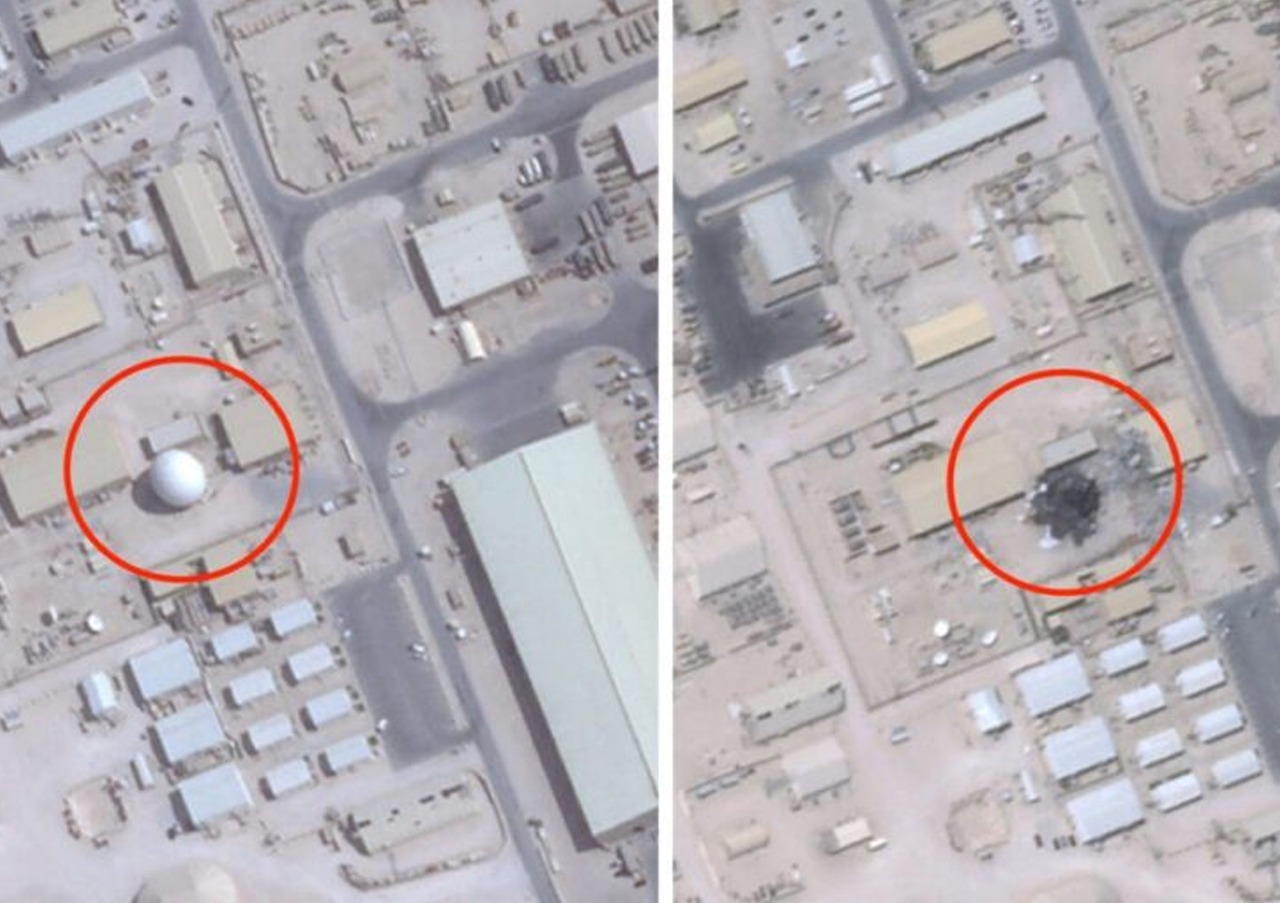
Qatar:
The Pentagon has officially acknowledged that a ballistic missile launched by Iran struck Al Udeid Air Base in Qatar on 23 June 2025, damaging a vital communications structure, according to satellite imagery and a fresh statement from U.S. officials.
The attack came in retaliation for U.S. air strikes on three Iranian nuclear sites on 22 June, a prelude to the ceasefire that currently holds in the Israel-Iran war. Iran launched a salvo of missiles, estimated at fourteen by the U.S. and up to nineteen by Qatari reports, all of which were intercepted by U.S. and Qatari air defences except one.
Pentagon spokesman Sean Parnell told Air & Space Forces magazine that “One Iranian ballistic missile impacted Al Udeid Air Base 23 June while the remainder of the missiles were intercepted by U.S. and Qatari air defence systems.” He added, “The impact did minimal damage to equipment and structures on the base. There were no injuries. Al Udeid Air Base remains fully operational and capable of conducting its mission, alongside our Qatari partners, to provide security and stability in the region.”
High resolution satellite images taken by Planet Labs before and after the assault show clear scorch marks where a 15 million dollar geodesic radome once stood. The dome housed the Modernised Enterprise Terminal (MET), a crucial secure communications hub first installed in 2016, which enabled voice, video and data links for forces in the Middle East.
While the U.S. earlier reported a successful defence, this new admission marks the first official confirmation of a missile actually breaching defences and hitting its target. Business Insider notes that the images show both scorch marks and damage to an adjacent structure, though it remains unclear whether this resulted directly from the missile strike or debris from interception.
Ian Caine, Chairman of the Joint Chiefs of Staff, remarked after the strike that “there was a lot of metal flying around,” referring to intercepting missiles, debris and boosters, highlighting the complexity of air defence operations under pressure.
Iran defended its assault as a measured counter response, targeting a symbol of U.S. military might rather than civilian areas. Tehran also informed both Qatari and American authorities in advance, ensuring no casualties were reported. Meanwhile, Qatar condemned the violation of its sovereignty and reserved the right to respond, though the airbase and wider region remain calm.
The strike was clearly symbolic, designed to signal Iran’s capability without provoking wider conflict. The MET remains a functioning target of strategic importance, but its armour proved vulnerable under determined assault. That the base continued to operate without disruptions reinforces the effectiveness of allied defences and strategic precaution, such as relocating aircraft and reinforcing Patriot batteries in advance.
For U.S. and Qatari forces, the incident underlines the ongoing volatility of the region, where precision missile strikes now form part of statecraft. Al Udeid, which houses the U.S. Central Command’s forward headquarters and hosts around 10,000 personnel, remains a lynchpin in military operations. As long as tensions persist, there is a renewed need to strengthen defences around critical infrastructure.